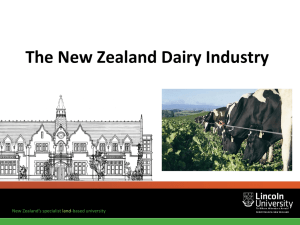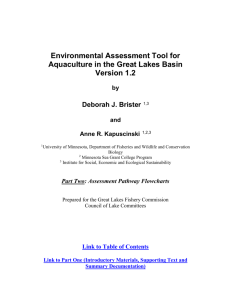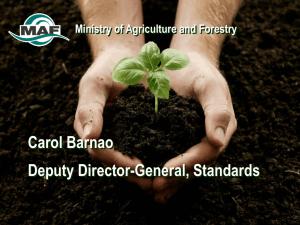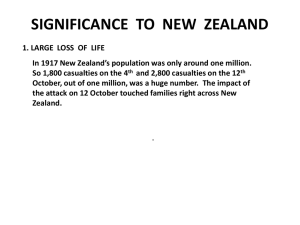The New Zealand Dairy Industry
advertisement
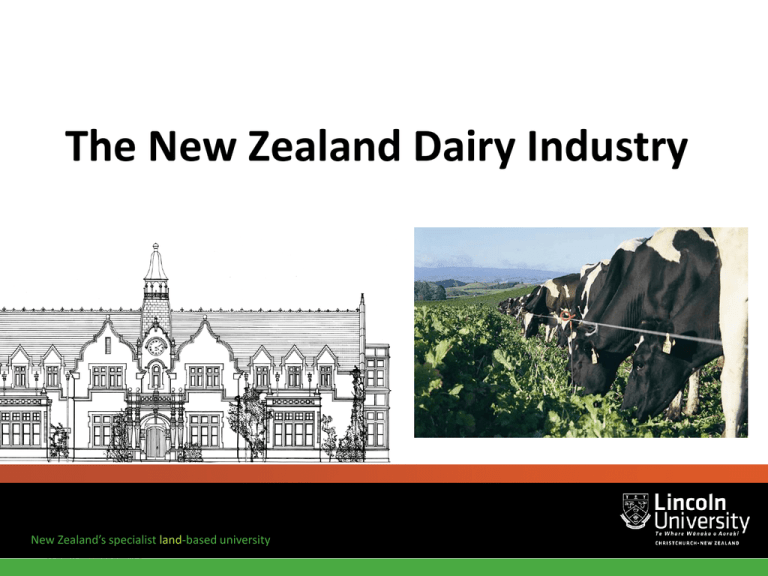
The New Zealand Dairy Industry New Zealand’s specialist land-based university • • • • Approx. 11,691 dairy farms Approx. 14% of the land in primary production Over 4.6 M milking cows Produce approx. 19,129 million litres of milk New Zealand’s specialist land-based university New Zealand Dairying - ‘our place in the world’ • Produce 4% of the world’s milk • Control nearly 40% of the dairy products that are traded internationally • 95% of our production is processed and exported New Zealand’s specialist land-based university Calender of events: • Most calving is in spring, to coincide with the start of pasture growth • Calves are reared on colostrum milk or sold as ‘bobby’ calves for slaughter at 4 days • Heifers reared for replacements, bulls for beef production New Zealand’s specialist land-based university • Cows rotationally graze paddocks (on pasture) • Cows are walked to the milking shed • Cows return to paddocks as soon as they are milked • Cows mated Oct/Nov by ‘AI’ and/or bull New Zealand’s specialist land-based university New Zealand’s specialist land-based university Cowsheds: New Zealand’s specialist land-based university New Zealand’s specialist land-based university • Grazing rotations are determined by pasture growth rates and range from 18-45 days • A milking cow requires approx. 17kg DM/day • Lactations last approx. 250280 days • Cows are ‘dried-off’ in late autumn (end May) • ‘Wintered’ off the area milked on New Zealand’s specialist land-based university Breeds of Cows (tested cows 2011-12) Breed % Litres MF % MP % MS LW Friesian 39% 4570 4.47 3.67 367 490 Jersey 14% 3269 5.71 4.10 323 400 Ayrshire <1% 4057 4.45 3.64 326 FxJ 47% 4082 5.01 3.91 361 New Zealand’s specialist land-based university 460 New Zealand’s specialist land-based university Strengths of New Zealand Dairy Industry: • • • • • • • • Integrated and co-ordinated structure Ability to produce milk at a low cost Low costs for feeding, housing, machinery High output of MS per labour unit Seasonal system Long distance from other cow populations Sharemilking options ‘Attitude’ of the industry New Zealand’s specialist land-based university Weaknesses of New Zealand Dairy Industry: • • • • • • • • Dependent on the world market Dependent on foreign exchange rates Dependent on weather and pasture growth Heavy workload for labour units at times of year Inefficiencies in use of processing factories Short lactations, low yields (kg MS/cow) Extremely high price of dairy land Distance from most markets and costs of freight New Zealand’s specialist land-based university
